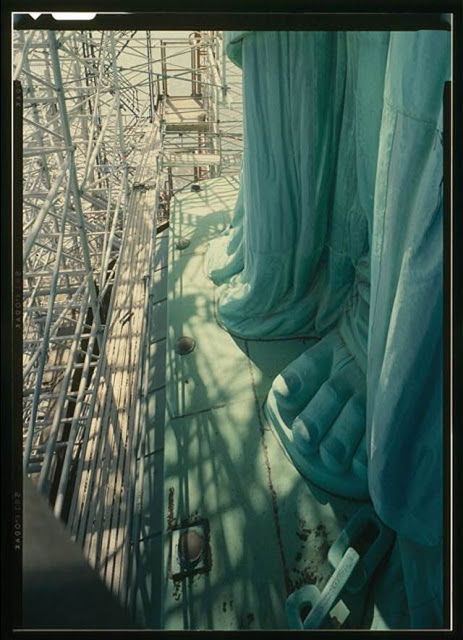The statue was examined in great detail by French and American engineers as part of the planning for its centennial in 1986.In 1982, it was announced that the statue was in need of considerable restoration. Careful study had revealed that the right arm had been improperly attached to the main structure. It was swaying more and more when strong winds blew and there was a significant risk of structural failure. In addition, the head had been installed 2 feet (0.61 m) off center, and one of the rays was wearing a hole in the right arm when the statue moved in the wind. The armature structure was badly corroded, and about two percent of the exterior plates needed to be replaced. Although problems with the armature had been recognized as early as 1936, when cast iron replacements for some of the bars had been installed, much of the corrosion had been hidden by layers of paint applied over the years.
In May 1982, President Ronald Reagan announced the formation of the Statue of Liberty–Ellis Island Centennial Commission, led by Chrysler Corporation chair Lee Iacocca, to raise the funds needed to complete the work.Through its fundraising arm, the Statue of Liberty–Ellis Island Foundation, Inc., the group raised more than $350 million in donations.The Statue of Liberty was one of the earliest beneficiaries of a cause marketing campaign. A 1983 promotion advertised that for each purchase made with an American Express card, the company would contribute one cent to the renovation of the statue. The campaign generated contributions of $1.7 million to the restoration project.
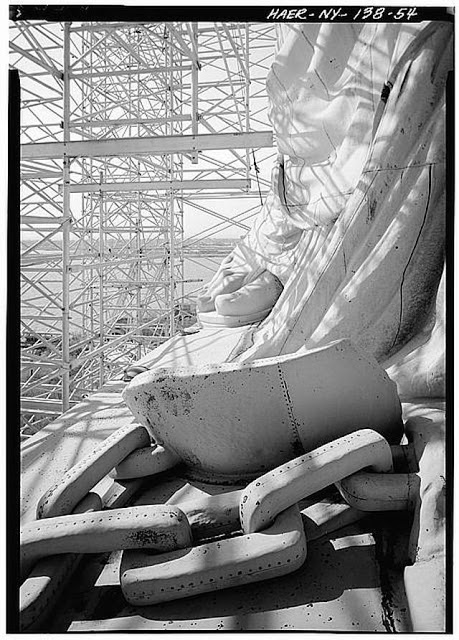
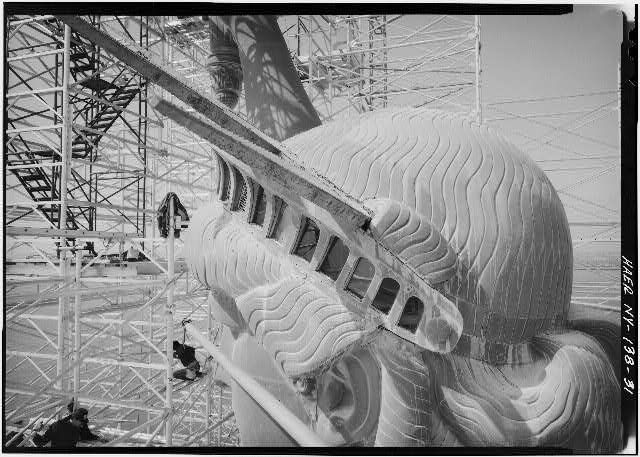
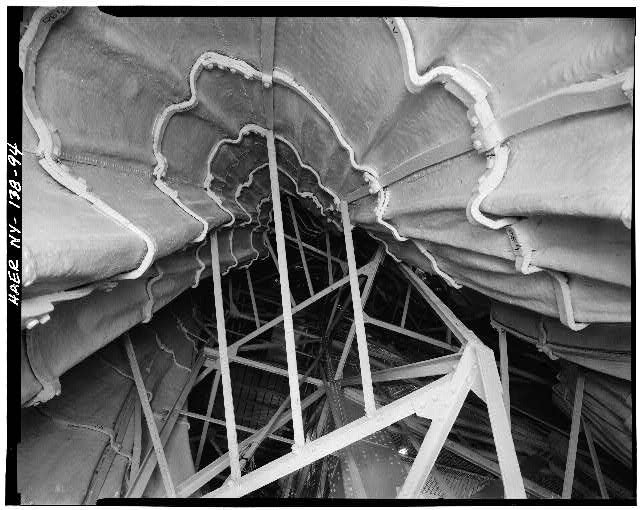
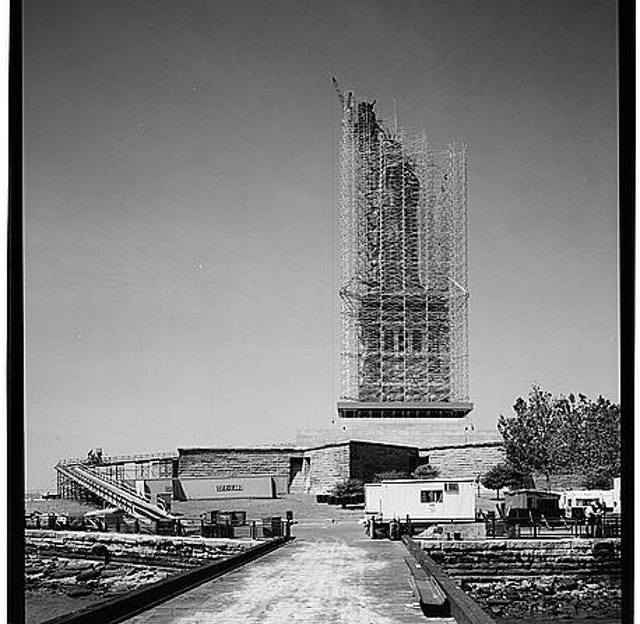
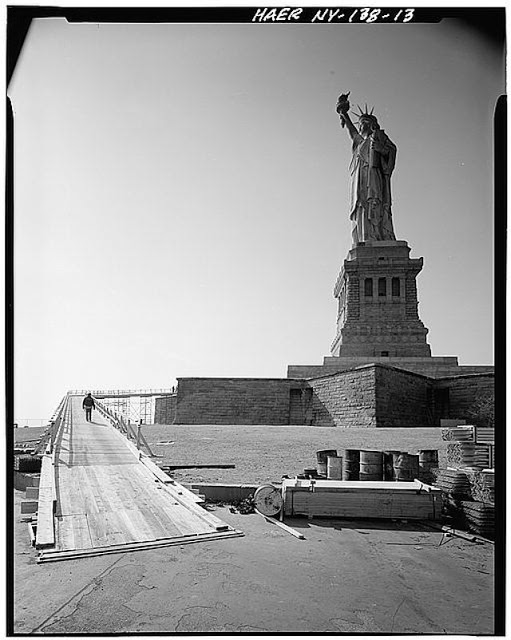
In 1984, the statue was closed to the public for the duration of the renovation. Workers erected the world’s largest free-standing scaffold, which obscured the statue from view. Liquid nitrogen was used to remove layers of paint that had been applied to the interior of the copper skin over decades, leaving two layers of coal tar, originally applied to plug leaks and prevent corrosion. Blasting with baking soda powder removed the tar without further damaging the copper.The restorers’ work was hampered by the asbestos-based substance that Bartholdi had used – ineffectively, as inspections showed – to prevent galvanic corrosion. Workers within the statue had to wear protective gear, dubbed “moon suits”, with self-contained breathing circuits. Larger holes in the copper skin were repaired, and new copper was added where necessary.The replacement skin was taken from a copper rooftop at Bell Labs, which had a patina that closely resembled the statue’s; in exchange, the laboratory was provided some of the old copper skin for testing.The torch, found to have been leaking water since the 1916 alterations, was replaced with an exact replica of Bartholdi’s unaltered torch.Consideration was given to replacing the arm and shoulder; the National Park Service insisted that they be repaired instead.The original torch was removed and replaced in 1986 with the current one, whose flame is covered in 24-carat gold. The torch reflects the sun’s rays in the daytime and lighted by floodlights at night.
The entire puddled iron armature designed by Gustave Eiffel was replaced. Low-carbon corrosion-resistant stainless steel bars that now hold the staples next to the skin are made of Ferralium, an alloy that bends slightly and returns to its original shape as the statue moves. To prevent the ray and arm making contact, the ray was realigned by several degrees.The lighting was again replaced—night-time illumination subsequently came from metal-halide lamps that send beams of light to particular parts of the pedestal or statue, showing off various details.Access to the pedestal, which had been through a nondescript entrance built in the 1960s, was renovated to create a wide opening framed by a set of monumental bronze doors with designs symbolic of the renovation. A modern elevator was installed, allowing handicapped access to the observation area of the pedestal. An emergency elevator was installed within the statue, reaching up to the level of the shoulder.
July 3–6, 1986, was designated “Liberty Weekend”, marking the centennial of the statue and its reopening. President Reagan presided over the rededication, with French President François Mitterrand in attendance. July 4 saw a reprise of Operation Sail and the statue was reopened to the public on July 5.In Reagan’s dedication speech, he stated, “We are the keepers of the flame of liberty; we hold it high for the world to see
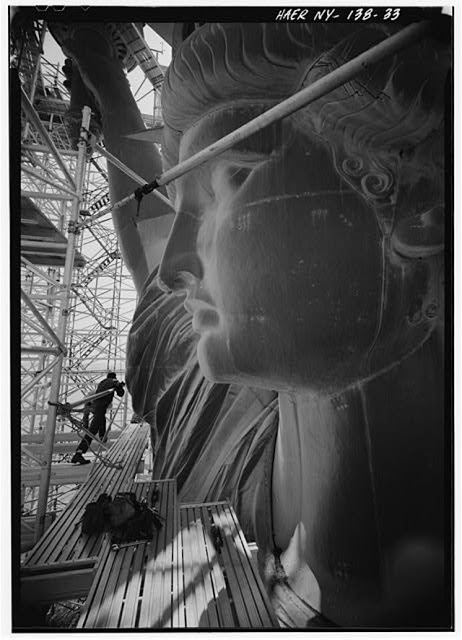
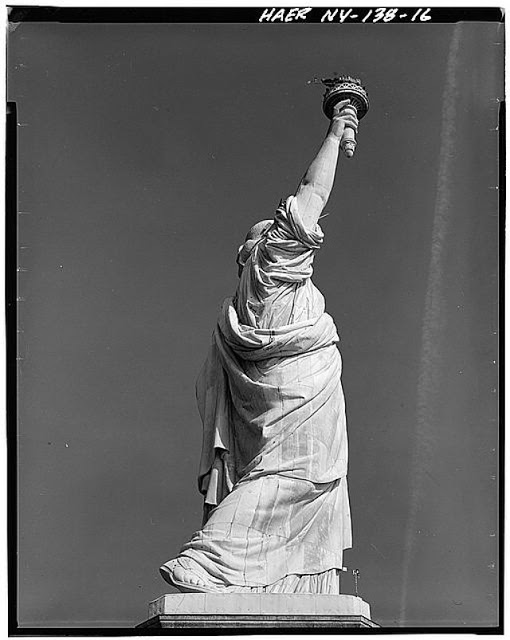
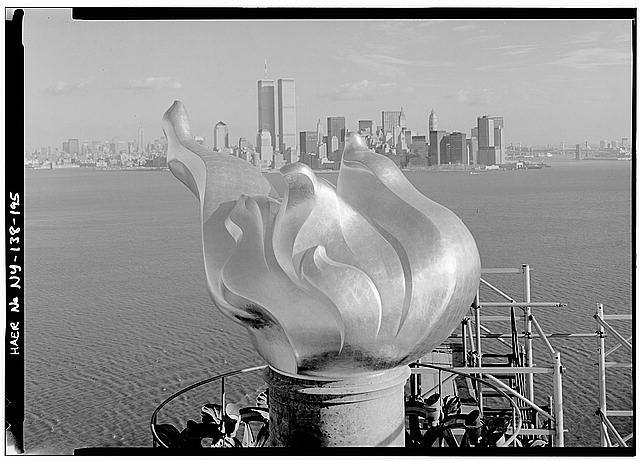
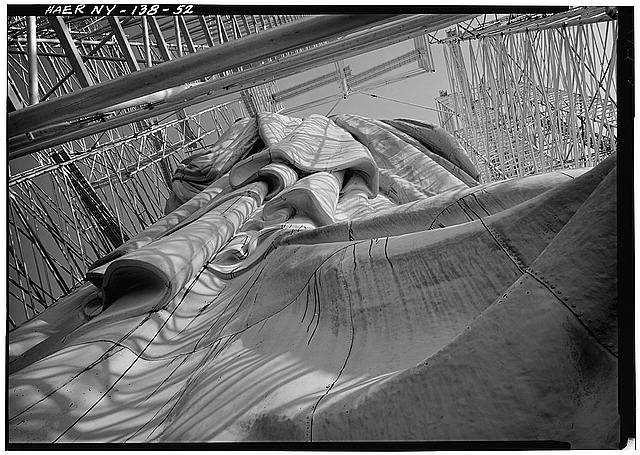
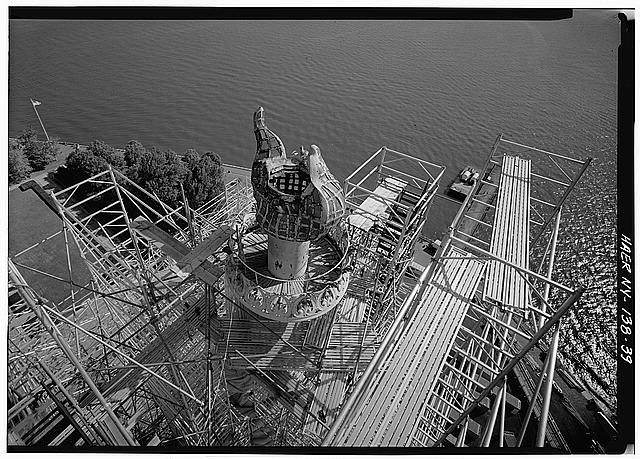
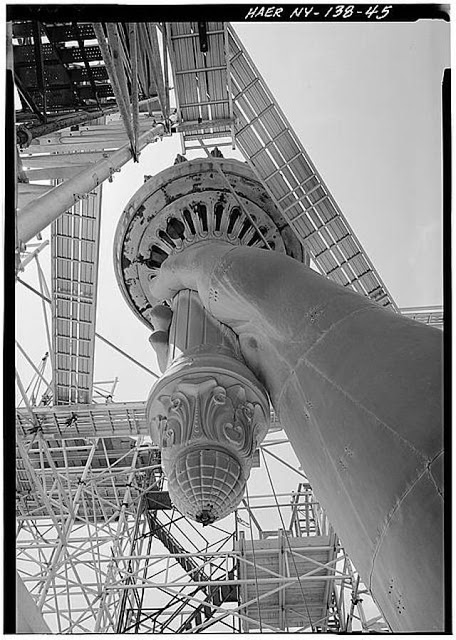
photos: Library of Congress,
